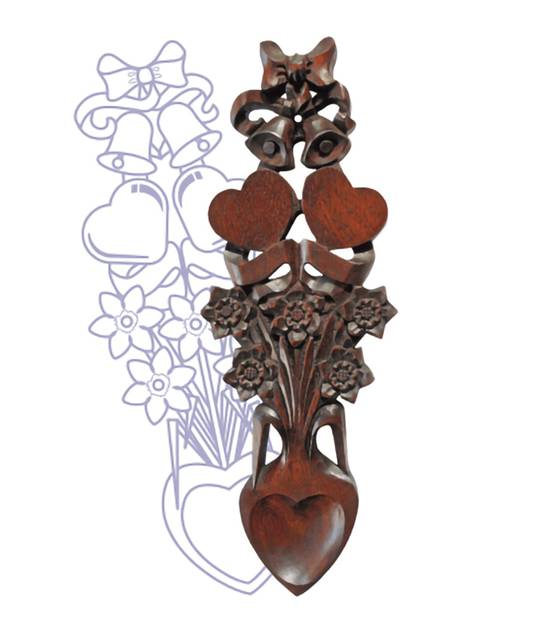Love is all around
"If you look for it, I’ve got a sneaky feeling you’ll find that love actually is all around.”
This is my favorite line from my favorite rom-com of all time, Love, Actually. And it is everywhere, and all the time, actually.
There is even a special day to commemorate love—of course I am talking about Valentine’s Day.
Valentine’s Day was the Feast of Saint Valentine, a day to commemorate the saint of the same name. The origin is a little confusing as there were two Christian martyrs named Valentine.
The correct one was persecuted for ministering to Christians, healing the sick, and secretly marrying soldiers and their partners when it was prohibited.
One of the earliest recorded celebrations of the feast day of Saint Valentine was in the 8th century. Later on, somehow it transformed into a day honoring lovers when “courtly love” was uso in the 14th and 15th century. Then all these traditions started such as the giving of chocolates, flowers, cards, jewelry and other presents from one “lovebird” to another.
Today, it is ardently celebrated, as much as Christmas or even more. Aside from flowers and confectionery gifts to the beloved, there is a dinner date, perhaps a romantic getaway.
Restaurants and hotel rooms are booked during Valentine’s, including Feb. 13 and 15 (for who, you ask?). The prices of red roses soar.
But there are others who find creative ways to celebrate the occasion. Couples go as far as arranging private rooftop dinners, theme park dates, flying to exotic locations, giving extravagant gifts, and even proposing on this day. Simple but meaningful gestures are much appreciated like serving your loved one breakfast in bed, giving a card, or writing a love letter.
But amore has no limits or demographics, right? Other cultures, too, have their own way of observing this passionate day and beyond.

It would be wonderful to celebrate this red letter day in none other than Paris, the “city of love.” However, it wasn’t always a romantic time throughout history.
There was a custom called une loterie d’amour where singles would stand outside houses calling out for other singles of the opposite sex. They would eventually pair off. If not happy with the match, the males would walk away.
The rejected ladies would get together and then burn images of those men. This practice got so uncontrollable, it was eventually banned by the French government.
But let’s get back to the romance, shall we? It is said that the first Valentine’s card or greeting was sent by the Duke of Orleans to his wife in France while imprisoned in the Tower of London in 1415. It is the first one on record.
In modern times, the French celebrate Valentine’s like the rest of the world—filled with the enchantment of romance. Joyeux Saint Valentin!

This is interesting. In Korea and Japan, their way of saying saranghae or aishiteru to their significant other is through White Day, which is on March 14, a month after Valentine’s.
Basically, it is where gifts are given back by men to women who remembered them on Valentine’s Day. So it is reverse. The women give “chocolates of love” to men on Valentine’s Day as an expression of their affection. The men then reciprocate by giving back white chocolates, marshmallows, or any white item, a month after.
The origins of White Day trace to 1978, started by the National Confectionery Industry Association of Japan. White-colored confectioneries were produced for men to return love to their female partners.
On the other hand, there is a Black Day in Korea, which I guess is anti-Valentine’s. On April 14, singles eat noodles with black bean sauce called jjajanmyeon to supposedly drown their sorrows.

According to “5 Valentine’s Day Traditions” from Latinitas magazine, Colombia and Bolivia celebrate Valentine’s Day on Sept. 20 and Sept. 21, respectively. Gift-giving and activities are the same but the date is just different.
It was changed from February to September in 1969 so that merchants could sell more roses, chocolates, and the like, since there were no holidays in the month.
It is similar in Brazil where its Dia dos Nomorados or “Lovers Day” was moved to June 12 because it coincided with their Carnival. Mexico and Ecuador extend their Valentine’s Day to family and friends. Feb. 14 is aptly named El dia del Amor y la Amistad or “Day of Love and Friendship.”
Love is not only for the young in Guatemala City. On Valentine’s Day, they hold an “old love” parade where senior citizens decked out in colorful outfits ride on festive floats and go through the streets of the metropolis in a festive event. And instead of roses, the Valentine flower of choice in Peru is the orchid.

Saint Dwynwen, the patron saint of lovers, is commemorated on Jan. 25 in Wales. Traditionally, a love spoon is given by males to their dearest female. The love spoons have intricate designs on wood and have been around since the 17th century. They are also given for other occasions such as proposals, weddings, and anniversaries.

On the other side of the map, in South Africa, women pin the name of the object of their affection on their shirtsleeves. As in they are really wearing their hearts on their sleeves on Valentine’s Day. This way, love interests discover their secret admirers. Apparently, this practice is based on an ancient Roman tradition called lupercalia.
The love reveals are a little bit more complicated in Norway: secret admirers send their crushes poems called gaekkebrev. The only clue to the admirer’s identity are dots representing each letter of his name. If the recipient guesses the identity correctly, she gets an Easter egg on Easter Sunday. If not, the man reveals who he is and she must give him an egg. It’s a little different but still exciting.
So whatever country, whatever language, whatever culture, or even gender, love is there waiting to be expressed. It may be in different ways and through unique traditions, but the message is all the same. Love transcends and, indeed, it is all around us.


